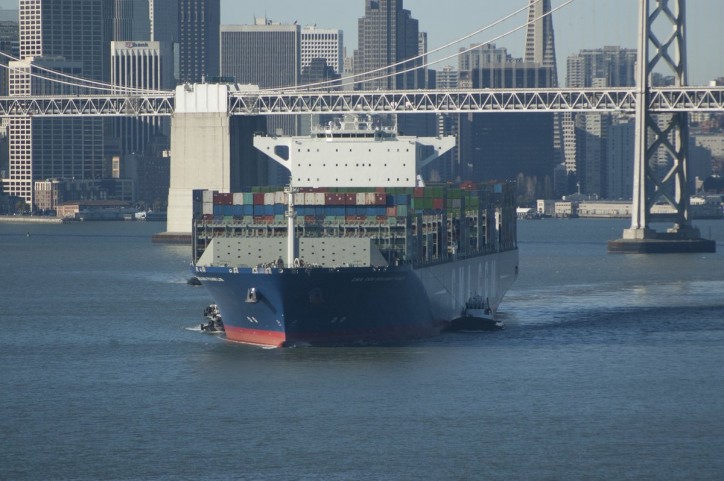Forecasts more cargo on bigger ships; 2.6 million containers annually by 2022
Port of Oakland maritime officials anticipate a five-year run of record cargo volume beginning next year. By 2022, the Port expects to handle the equivalent of 2.6 million 20-foot containers annually. It would be 8 percent more volume than the Port has ever processed in a single year.

The figures appear in a Strategic Maritime Roadmap released by the Port this month. The blueprint for the future foresees increased cargo volume arriving at Oakland on larger ships. Northern California’s booming freight market will drive the growth, the Port said. New logistics capabilities, such as distribution centers and freight transfer facilities, should provide a further boost, it added.
“We’re serving a thriving area and developing new services for our customers,” pointed out Oakland’s Maritime Director, John Driscoll. “The combination should be positive for everyone who relies on the Port for their business or their job.”
The Port’s Roadmap forecasts record volume of more than 2.4 million cargo containers in 2018. The current record is 2.39 million set three years ago. The Port said it anticipates steady growth – and new volume records - for the next five years.
The Port predicted that ships arriving here would be 35 percent larger within 15 years. They’ll carry up to 18,000 containers, reducing the number of vessels needed in Oakland. That should help mitigate the impact of cargo growth. Fewer ships means fewer diesel exhaust emissions.
The Port said its new logistics developments will rise near rail lines to reduce the reliance on trucks. That’s expected to further curb diesel emissions.
Oakland’s Roadmap includes a commercial strategy calling for:
- Growing business from local and regional markets;
- Remaining the top export gateway for California Central Valley growers;
- Increasing U.S. Midwest meat and grain exports;
- Attracting containerized cargo to a new refrigerated distribution center and to the 440,000-square-foot first phase of its Seaport Logistics Complex;
- Increasing to 15 percent the amount of import cargo that arrives in Oakland and is loaded to the rails for inland distribution;
- Attracting more automotive imports; and
- Making Oakland the first U.S. port of call for at least one vessel service originating in Asia.
A summary of the Strategic Maritime Roadmap is available here.
Source: Port of Oakland